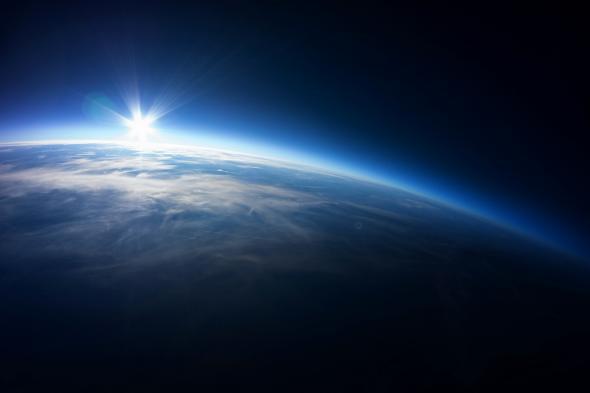When you live (and sleep) in little gravity and experience 16 sunrises (and 16 sunsets) over the course of one day—as the astronauts residing on the International Space Station do—“mornings” don’t quite have the same meaning as they do on Earth.
“Getting out of bed,” for instance, means zipping yourself out of a sleeping bag attached to a wall that’s inside a refrigerator-sized pod in the crew quarters, the only personal spaces on board. “Hot shower” is a sponge bath similar to what you might have experienced while staying in a hospital. “Breakfast” is sustenance like oatmeal or scrambled eggs in a foil pouch, dehydrated until you add hot water, which you then suck through a straw.
“I think one of the most fascinating parts of living on Space Station is that you completely adapt to your environment. What sounds so surreal and science fiction-like becomes very routine and normal,” says Timothy Kopra, a NASA astronaut who’s spent a total of 244 days in space over two spaceflights.
But astronauts do find themselves enjoying some Earthbound pleasures even while 249 miles above the atmosphere.
For one, just like us work-obsessed Americans on Earth, Kopra usually checks his email (via a laptop) right upon waking. While he’s enjoying his coffee—instant, but with choices including milk and sugar—Kopra can watch TV news projected onto a screen in front of a table in the ISS galley. Even shaving isn’t much of a hassle: Kopra says water in zero gravity sticks onto skin just like shaving cream, and having a towel handy helps clean up any globules that try to flitter away.
But living in microgravity is more than just a mental or social adjustment. Your brain has to acclimate to having your body flipped around in different orientations—upside-down, sideways, horizontal. Your muscles have to learn to move in ways they’re not used to—think of using your feet to maneuver items, or your hands to “walk” forward. And exercise on the ISS isn’t just a daily chore, it’s a necessity—muscles could start to atrophy and astronauts would lose a lot of bone density without it.
Space scientists are continuously trying to learn more about how the body adapts to living in low gravity, so between the usual technical tasks they accomplish while on the ISS, the astronauts are also running regular physiological tests on themselves and recording their vital stats, including using an ultrasound machine on board that can track their hearts, cardiovascular systems, and muscles.
Then there’s the issue of sleep deprivation. On average, astronauts on the ISS only get about six hours of sleep, which can be due to a multitude of factors. Kopra, for one, felt his body missed the physical contact of resting on a bed while sleeping.
Some astronauts take supplements like melatonin to help regulate their sleep cycles or just rely on caffeine and exercise for energy. NASA is working on a couple studies on how to improve sleeping conditions for space dwellers: One solution so far has been to change the lighting inside the ISS from fluorescents to special LEDs that can be shifted to different intensities to match the astronauts’ needs at different times.
The 16 sunrises that ISS crew members experience each day doesn’t help with circadian rhythms either. As the ship orbits the Earth every 90 minutes, speeding by at nearly five miles per second, astronauts learn not to associate the intervening light or darkness with “day” or “night.” Plus, the sun is at even brighter levels than for Earthlings because the ISS isn’t protected under the atmosphere; Kopra has found that being exposed to such bright sunlight right before bedtime would disturb his sleep.
So instead of signifying a change of day, those events often turn into artistic opportunities. “The sunrises and sunsets were so beautiful and so amazing, they looked like they weren’t even real,” Kopra says. “I think all of us spent a lot of time trying to capture that in photographs.” Not so different from Earth after all.
